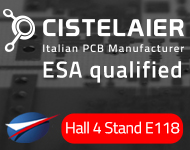Electronics Production |
Atotech with new high purity copper plating chemistries
Atotech’s Semiconductor R&D team, located at the College of Nanoscale Science and Engineering (CNSE) in Albany, New York, has developed advanced electrochemical deposition (ECD) copper chemistries capable of plating state-of-the-art Damascene structures with feature sizes down to 20nm.
Such cutting edge structures are used in the latest memory technologies and are being developed for future devices down to the 15nm technology node.
As a result of the research and development carried out by the Atotech team in partnership with CNSE, it has been found that the purity level of the plating chemistry contributes significantly to the plated copper properties. Based on this realization, we have improved the purity of the raw materials, the efficiency of the manufacturing process, and finally the specification level of the plating chemistries.
In an effort to optimize our semiconductor chemistries, a new production facility was built in Neuruppin, Germany with capabilities to control contamination levels down to <10 ppb and instrumentation to measure these values. In this new production facility, concentrated raw materials are supplied to the production vessel in an automatic mode. The manufacturing process utilizes Ultra High Purity (UHP) Deionized (DI) water preparation, complete tool encapsulation technologies, and mini clean room environments for the chemistry filling stations.
These selected components were pre-qualified to eliminate contamination contribution and ensure stability under dynamic switching conditions. All manufacturing materials are compatible with the high purity chemistries and specifications, which further proves the eliminated risk of degradation during the manufacturing cycle.
In-line analytical and control instruments are employed to monitor key variables during the manufacturing process, which ensures consistent levels and minimizes potential variations. Reducing batch-to-batch variations was a key objective for the design of the system, as was the “zero adder” approach for the components and piping used.
Target specifications for the UHP plating chemistries are less than 100 ppb of cat ions and particle levels lower than 100K per liter at or above 200 nanometers. The facility is designed to further lower the impurity specifications if device requirements request lower levels.
In September 2011, Atotech will celebrate the internal qualification of the new high purity chemical production plant in Neuruppin, Germany.
The internal qualification ceremony will include a number of technical presentations and open discussions on contamination control requirements. The use of high purity electrolytes and the potential impact of contamination to different semiconductor plating applications will be discussed.
To achieve stable, high purity manufacturing, the associated quality assurance must be customized accordingly, and resolutions need to be enhanced from previous generations of detection methods.
The potential of productivity gains for different applications via chemical quality improvements will be presented and discussed. Latest metallization technologies used in MEMS and semiconductor applications are the main driver of for this high purity approach; however additional applications will follow as customers scale geometries and/or decrease deposited layer thickness towards the nanoscale regime.
